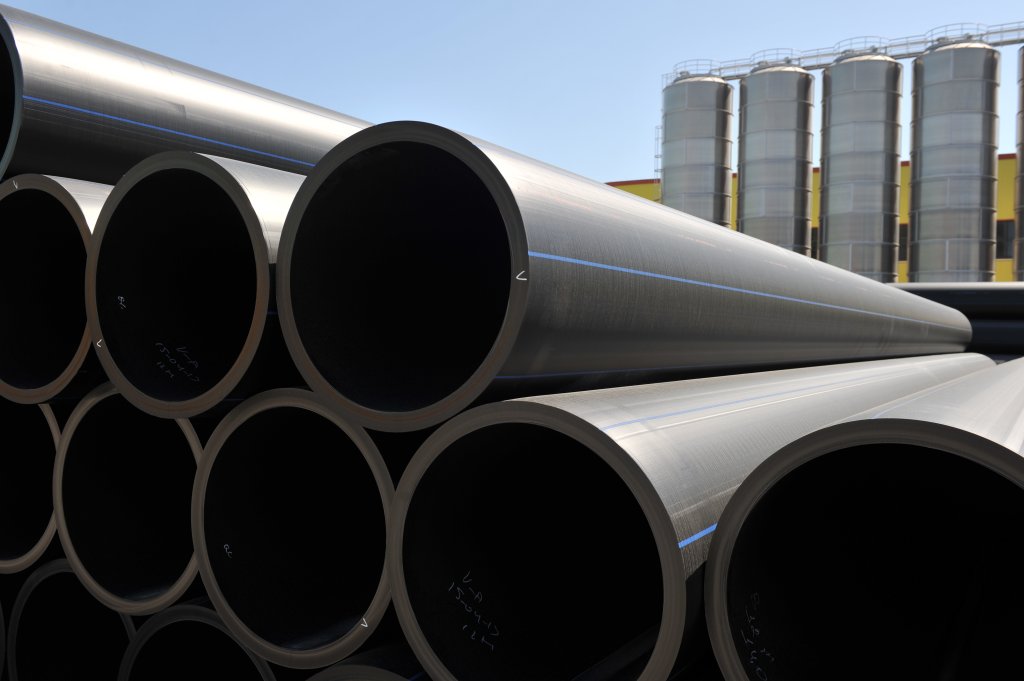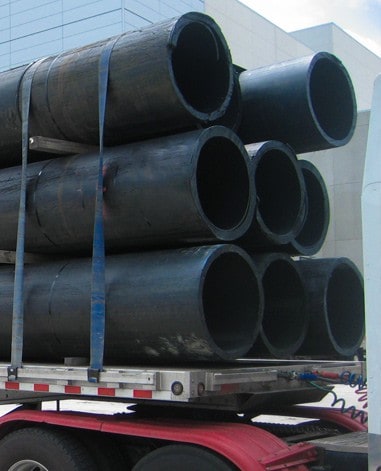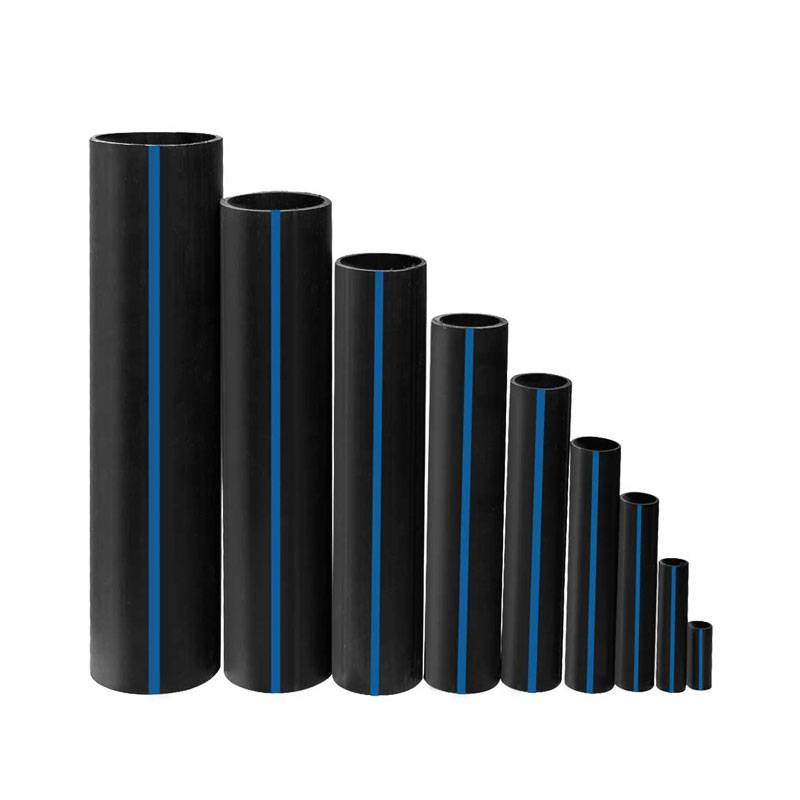Where to Find hdpe pipe in stock Midland TX for Fast Turnaround
Wiki Article
Discover the Production Refine Behind High-Quality HDPE Pipe and Its Applications
The manufacturing procedure of top quality HDPE pipes is intricate and systematic. It starts with the choice of resources that enhance efficiency. Following this, ethylene goes through polymerization to form resin, which is after that formed through extrusion. Quality control is critical, guaranteeing that the last product meets rigorous criteria. The journey of HDPE pipelines doesn't finish with production. Their applications throughout numerous sectors reveal a wider importance worth checking out.Comprehending HDPE: Properties and Advantages

High-density polyethylene (HDPE) is a functional thermoplastic understood for its resilience and resistance to different ecological elements. This product displays superb tensile strength, making it appropriate for requiring applications. Its low-density structure adds to a light-weight item, assisting in convenience of dealing with and setup. HDPE likewise showcases impressive resistance to chemicals, which minimizes deterioration when subjected to rough substances.
The material's low dampness absorption further boosts its long life, making it perfect for use in pipelines and storage space tanks. Additionally, HDPE is resistant to ultraviolet (UV) radiation, making certain that items maintain their stability even when subjected to sunlight. In addition, its flexibility enables the production of complex shapes without compromising strength. The environment-friendly nature of HDPE, often stemmed from recycled products, includes in its charm, promoting sustainable techniques in production. On the whole, these residential properties and advantages make HDPE a preferred selection for various commercial and customer applications.
Raw Product Option for HDPE Manufacturing
The choice of basic materials for HDPE production is crucial to verify the final item satisfies the desired specifications and top quality requirements. High-density polyethylene (HDPE) is mainly produced from polymerized ethylene, originated from fossil gas such as all-natural gas or petroleum. The high quality of these feedstocks substantially affects the mechanical and thermal buildings of the last HDPE.Ingredients likewise play a considerable duty in improving HDPE's performance, including antioxidants, UV stabilizers, and colorants, which enhance resilience and resistance to environmental elements. The selection procedure need to take into consideration not just the chemical composition of the raw products however additionally their processing features to guarantee effective production.
Additionally, the sourcing of basic materials must focus on sustainability and conformity with environmental policies, as responsible methods are crucial in today's market. Inevitably, mindful basic material choice lays the structure for creating high-quality HDPE pipes suitable for diverse applications.
The Extrusion Process: Shaping HDPE Pipe
The extrusion procedure plays an important function in forming HDPE pipelines, starting with thorough product prep work strategies that assure excellent circulation and uniformity. Just as important is the design of the die, which directly influences the final dimensions and surface quality of the pipe. Together, these variables add greatly to the effectiveness and high quality of HDPE pipeline production.Material Preparation Techniques
Efficient production of HDPE pipes begins with thorough material prep work strategies, specifically the extrusion process. During this phase, high-density polyethylene resin is initial dried to remove wetness, guaranteeing optimal flow qualities. The resin is then fed right into the extruder, where it undertakes home heating and melting, transforming into a thick state. This heating process is carefully controlled to maintain the material's honesty and efficiency. The liquified HDPE is compelled via a die, forming it into a continuous pipe type. Appropriate temperature level administration during extrusion is crucial, as it straight affects the material's residential properties and the end product top quality. As soon as formed, the HDPE pipe is cooled down and reduced to specified sizes, all set for subsequent handling and applications.Die Style Significance
Precision in die style plays an essential duty in the extrusion procedure of HDPE pipelines. The die serves as the last shaping device, directly influencing the pipe's dimensions, wall density, and surface area finish. A properly designed die warranties consistent material flow, minimizing problems such as abnormalities and weak areas. The geometry of the die have to be optimized to suit the certain homes of HDPE, including its viscosity and thermal actions during extrusion. In addition, the cooling rate of the material as it travels through the die can considerably influence the pipeline's structural stability. Investing in innovative die technology is important for producers aiming to produce top quality HDPE pipelines that fulfill market standards and consumer assumptions.Top Quality Control Procedures in HDPE Production
Although various variables affect the top quality of HDPE pipe manufacturing, efficient high quality control steps are vital to assure uniformity and dependability in the end product. Key quality assurance methods consist of extensive product evaluation, confirming that the raw polyethylene meets established requirements for pureness and density. Throughout the extrusion process, specifications such as temperature, stress, and cooling time are closely checked to maintain dimensional accuracy and structural stabilityFurthermore, post-production testing is crucial; makers frequently carry out hydrostatic examinations to analyze the pipe's stamina and resistance to pressure. Aesthetic examinations for surface area problems better improve quality control. Accreditation from appropriate requirements organizations, like ASTM or ISO, supplies an extra layer of integrity. By applying these complete top quality control steps, makers can lessen defects, improve efficiency, and make certain that the HDPE pipes fulfill the certain requirements of numerous applications, ultimately causing client contentment and trust in the item.
Applications of HDPE Pipeline Throughout Industries
HDPE pipelines are made use of throughout numerous industries as a result of their sturdiness and versatility. In water circulation systems, they assure reliable shipment, while in wastewater administration, they supply reputable solutions for waste transportation. Additionally, agricultural watering networks benefit from HDPE's resistance to deterioration and versatility, making it an optimal choice for modern farming practices.
Water Distribution Systems
A significant variety of industries count on high-density polyethylene (HDPE) pipes for effective water circulation systems. Recognized for their toughness and resistance to corrosion, HDPE pipelines are widely used in local water networks, agricultural irrigation, and commercial applications. Their lightweight nature helps with very easy handling and installment, lowering labor costs and time. In addition, HDPE pipelines can fit various stress degrees, making them suitable for both reduced and high-pressure systems. Texas hdpe pipe manufacturer. hdpe pipe suppliers Midland TX The flexibility of the product enables seamless integration into existing infrastructure, lessening the need for extensive excavation. In addition, HDPE's resistance to chemical seeping warranties that the water delivered continues to be risk-free and tidy, making it an optimal option for keeping the quality of drinkable water across numerous fieldsWastewater Monitoring Solutions
Reliable water distribution systems additionally lead the way for ingenious wastewater monitoring options, where high-density polyethylene (HDPE) pipes play a significant role. Renowned for their resilience and resistance to deterioration, HDPE pipelines are ideal for transporting wastewater in numerous setups. Their versatility permits very easy installation in complex settings, minimizing the requirement for extensive excavation. Additionally, HDPE's smooth interior surface area decreases friction, improving flow rates and efficiency. These pipelines are also immune to chemical leaching, making sure that impurities do not endanger the surrounding environment. Industries, districts, and therapy centers significantly rely on HDPE pipelines for their integrity and long life, making them a favored selection for modern-day wastewater administration systems. This flexibility highlights the vital importance of HDPE pipelines throughout countless applications.Agricultural Irrigation Networks
Agricultural watering networks benefit greatly from making use of high-density polyethylene (HDPE) pipes, which offer efficient and trusted water delivery to crops. HDPE pipelines are lightweight, making them very easy to transfer and install, while their adaptability permits different configurations in diverse terrains. These pipes show superb resistance to corrosion, chemicals, and UV radiation, making sure durability in rough farming atmospheres. Furthermore, their smooth indoor surface lessens friction loss, optimizing water flow and lowering energy costs connected with pumping. The longevity of HDPE pipes, often exceeding 50 years, adds to lower maintenance and substitute expenses. Farmers significantly count on HDPE pipes to boost irrigation performance and advertise lasting agricultural practices, ultimately leading to boosted crop returns and resource preservation.
Future Fads in HDPE Pipe Modern Technology
As the demand for lasting and effective infrastructure grows, developments in HDPE pipeline innovation are poised to change numerous sectors. Emerging patterns consist of the assimilation of wise innovations, such as sensing units and IoT abilities, which promote real-time tracking of pipeline problems, reducing upkeep expenses and preventing leaks. In addition, the growth of innovative manufacturing strategies, such as 3D printing, is enabling the production of complicated, tailored pipeline styles that deal with details project requirements.Additionally, the emphasis on recycling and circular economic situation methods is driving the technology of HDPE pipelines made from recycled materials, improving sustainability. Boosted jointing techniques, such as electro-fusion and mechanical fittings, are likewise enhancing setup effectiveness and reliability. The growing emphasis on ecological guidelines is pressing makers to embrace greener manufacturing procedures, making sure that HDPE pipelines not only satisfy market requirements but additionally promote an even more sustainable future for facilities advancement.
Regularly Asked Inquiries
Just How Does HDPE Compare to Various Other Plastic Materials?
HDPE surpasses numerous other plastic materials relating to durability, chemical resistance, and flexibility. Its reduced density and high tensile toughness make it perfect for various applications, commonly going beyond options in both efficiency and longevity.What Are the Environmental Effects of HDPE Manufacturing?
The ecological impacts of HDPE production consist of greenhouse gas exhausts, energy consumption, and potential contamination from producing processes. In addition, inappropriate disposal can result in dirt and water contamination, increasing worries regarding long-term eco-friendly results.Can HDPE Pipes Be Recycled?
Yes, HDPE pipelines can be reused. Many facilities approve utilized HDPE for handling, transforming it right into brand-new items. This reusing adds to sustainability efforts, reducing plastic waste while conserving sources and energy in the production cycle.What Is the Lifespan of HDPE Piping?

How Do Temperature Level Variants Affect HDPE Pipeline Performance?
Temperature variants considerably influence HDPE pipe efficiency, influencing adaptability and strength. Heats can cause softening, while reduced temperature levels might cause brittleness, inevitably influencing the pipe's resilience and suitability for various applications in diverse environments.Report this wiki page